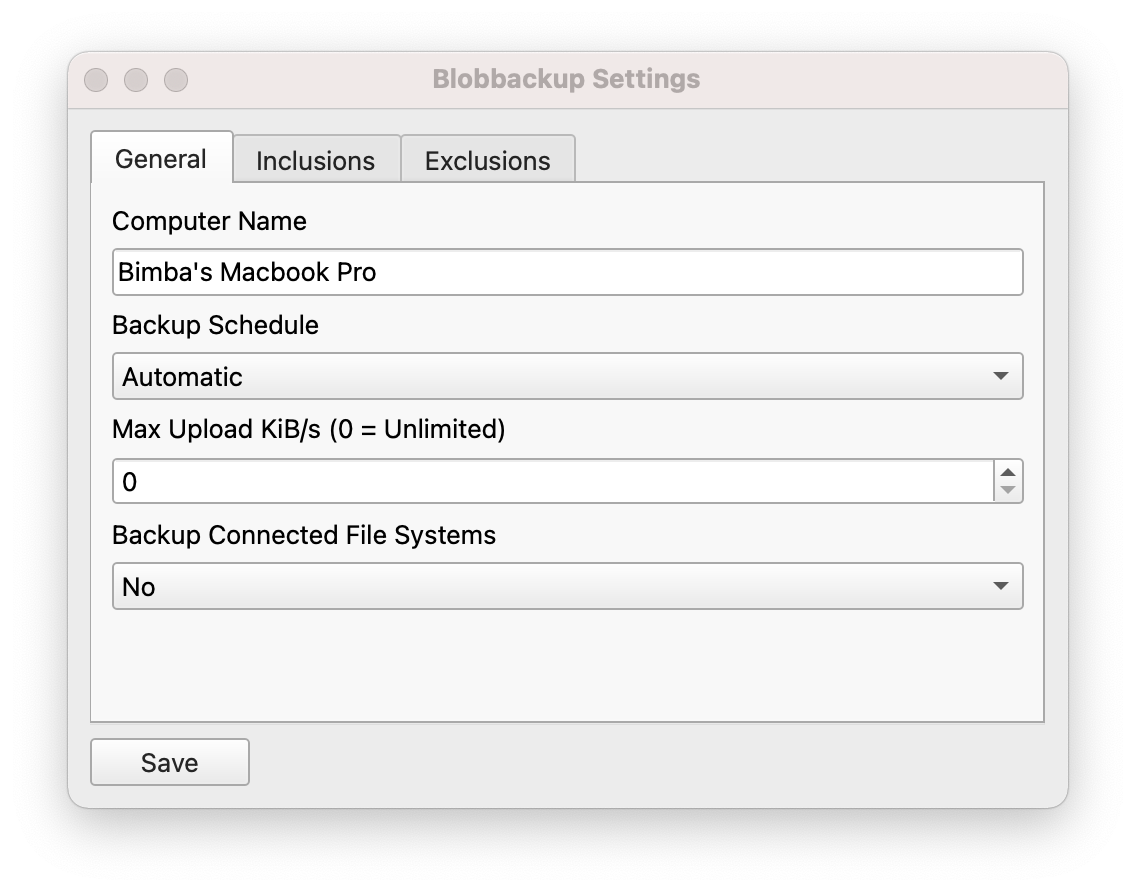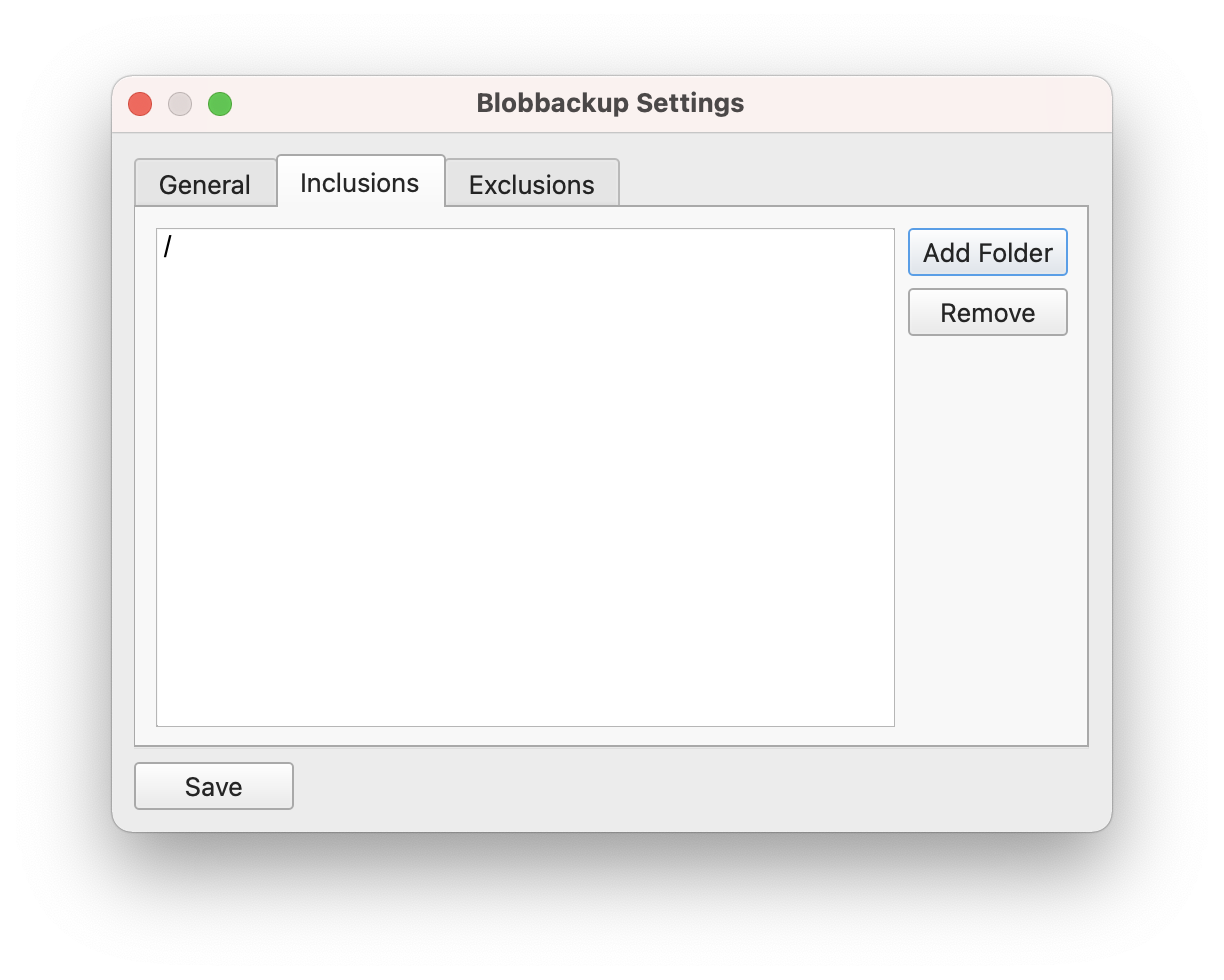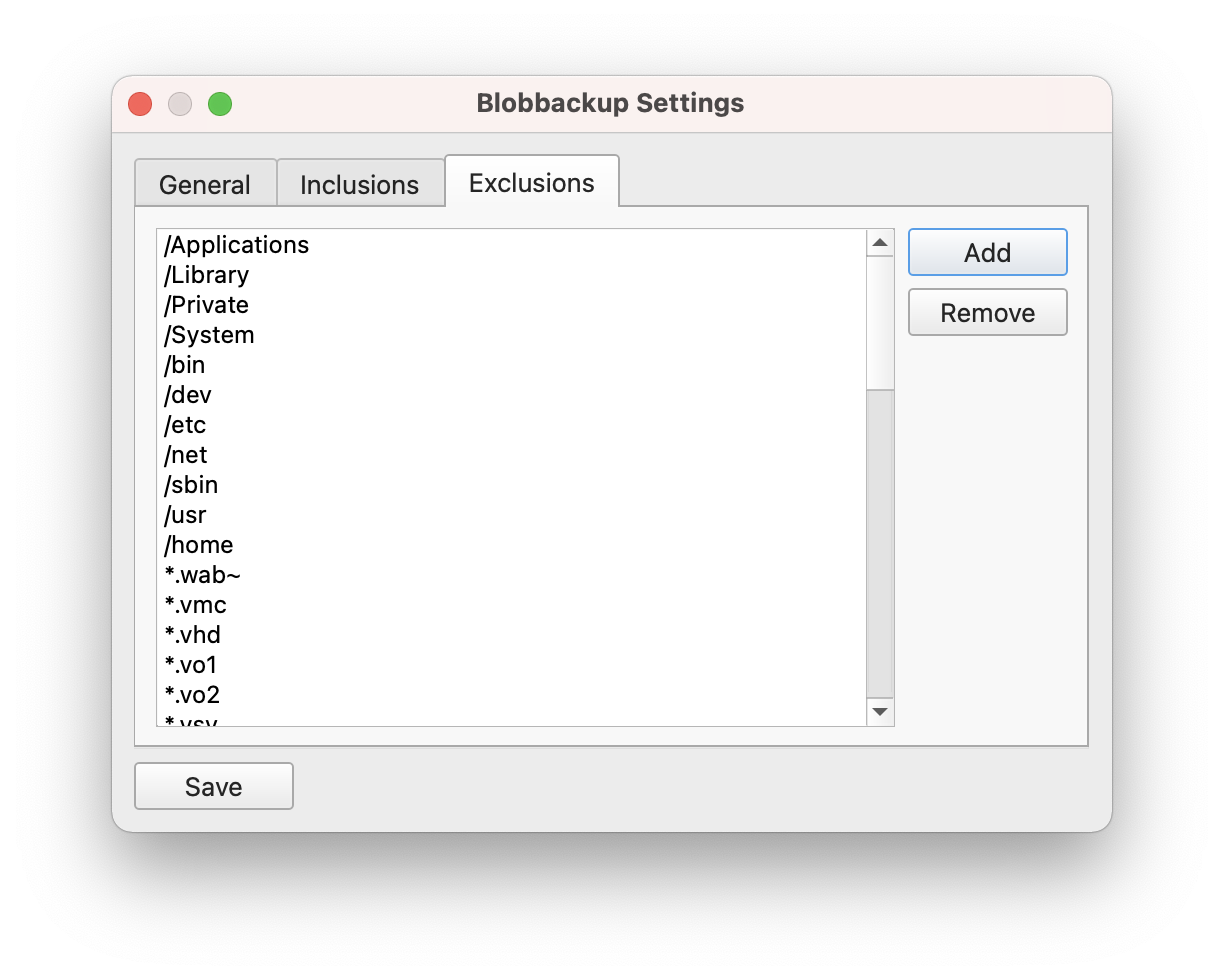You can open the settings window from the Blobbackup control panel by clicking the Settings button.

General Settings
Under the general settings tab, you can change the:
- Computer Name: the identifier for your computer. By default, we pick your computer's hostname but you can change this to anything you want. Changing this does not impact backups at all.
- Backup Schedule: when to run your backups. Automatic (recommended) means Blobbackup will create a backup every hour. Manual means Blobbackup will only backup when you click the Backup Now button.
- Max Upload KiB/s: the maximum upload bandwidth allowed. 0 (recommended) means there is no limit. This can be useful if you have bandwidth limits from your ISP or if you want Blobbackup to use less bandwidth while running.
- Backup Connected File Systems (only on Mac): by default, Blobbackup does not backup connected volumes (eg: NAS, Google Drive, Dropbox). Enable this to backup those too.

Inclusions Settings
Under the inclusions settings, you can select what folders you want backed up. By default, Blobbackup backs up everything under "/" on Mac and everything under the "C" drive on Windows.
Click the Add Folder button to select and add a folder on your computer for backup. Click the Remove button while selecting an existing folder to remove it.

Exclusions Settings
Under the exclusions settings, you can edit what gets excluded from your backups. By default, Blobbackup excludes the following.
Click the Add button to add a new exclusion rule. Click the Remove button while selecting an existing rule to remove it.
- To exclude a folder, add the full path of the folder as an exclusion rule. For example, if I wanted to exclude my Downloads folder on Mac, I'd add the exclusion rule "/Users/bimba/Downloads". And if I wanted to exclude the Downloads folder on my PC, I'd add the exclusion rule "C:/Users/bimba/Downloads". Contact support if you have any specific questions.
- To exclude all files with a specific extension, add the name of the extension with an "*" at the beginning. For example, if I wanted to exclude all files with the ".mov" extension, I'd add the exclusion rule "*.png".

 Blobbackup
Blobbackup